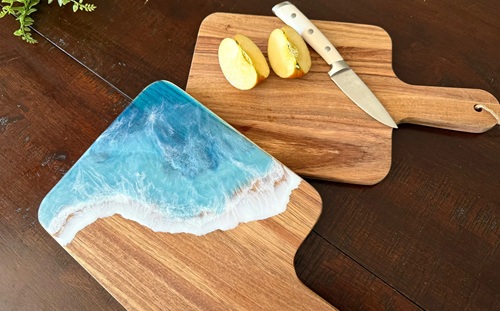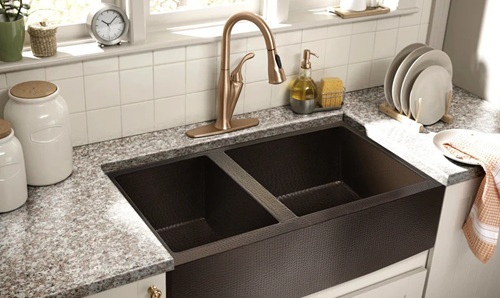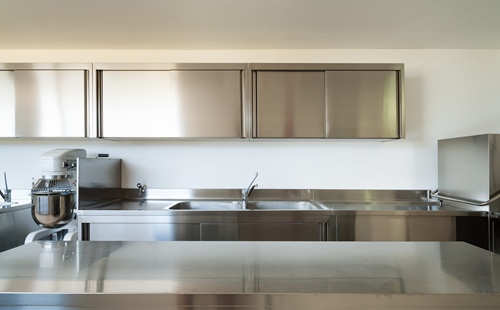Choosing the right cutting board is one of the most overlooked yet essential decisions in the kitchen. While wooden and plastic cutting boards have long dominated the culinary scene, acrylic cutting boards are steadily gaining popularity for their modern appearance, transparency, and easy maintenance.
But are they a smart choice for your kitchen? Lets break down the pros and cons of acrylic cutting boards, highlighting their performance, durability, hygiene, and value—so you can make an informed decision for your cooking space.

What Is an Acrylic Cutting Board?
An acrylic cutting board is made from synthetic polymethyl methacrylate (PMMA)—a transparent plastic more commonly known as plexiglass or acrylic glass. These boards are rigid, non-porous, and come in a variety of sizes and styles. Some are completely clear, while others may be frosted, colored, or etched with measurements and guides.
Acrylic boards appeal to those looking for a sleek, modern kitchen aesthetic, and they’re often used as serving trays or countertop protectors in addition to food prep.
✅ Pros of Acrylic Cutting Boards
1. Sleek, Modern Appearance
Acrylic cutting boards are visually striking, especially when transparent or colored to match your kitchen’s design. Their glass-like finish complements minimalist or modern interiors and can double as attractive serving trays or cheese boards.
Design Tip: A clear acrylic board can help showcase beautiful countertop surfaces like granite, marble, or quartz while providing protection.
2. Non-Porous and Hygienic
Unlike wooden boards, acrylic is non-porous, which means it won’t absorb moisture, odors, or bacteria. This makes it a more hygienic choice for cutting raw meat, poultry, or fish, as it won’t harbor pathogens with proper cleaning.
Fact Check: According to NSF (National Sanitation Foundation) guidelines, non-porous boards are generally preferred in commercial kitchens for hygiene purposes.
3. Easy to Clean
Acrylic cutting boards are dishwasher-safe and can be easily cleaned with soap and water. Their smooth surface resists stains and odors better than traditional plastic or wood boards.
Bonus: Unlike wood, they don’t require oiling or special maintenance.
4. Durable for Light to Medium Use
Acrylic is harder than regular plastic, which gives it a sturdy and stable cutting surface for light and medium prep work. It’s ideal for slicing vegetables, fruits, bread, and cooked foods.
Pro Tip: Use silicone grips or non-slip mats under the board for added stability.
5. Doesn’t Warp or Crack Easily
Acrylic is less likely to warp under temperature changes compared to cheap plastic boards. It also doesn’t crack or splinter the way bamboo or composite wood can when exposed to water or knife pressure.
❌ Cons of Acrylic Cutting Boards
1. Can Dull Knives Quickly
One of the biggest downsides of acrylic is its hard surface, which can dull knife blades faster than wood or high-quality plastic boards. Acrylic doesn’t give way under pressure, forcing the knife edge to absorb more impact with every cut.
Fact: According to knife experts, harder cutting surfaces like acrylic, glass, or ceramic can reduce the lifespan of knife edges by up to 30–40% with frequent use.
2. Prone to Scratching
Although acrylic is rigid, it’s also prone to visible scratching. Over time, repeated cutting can create grooves and marks that mar the clear or glossy finish. These grooves can also trap food particles, slightly reducing the board’s hygiene unless cleaned thoroughly.
Tip: Reserve acrylic boards for dry ingredients and avoid aggressive chopping.
3. Not Ideal for Heavy-Duty Chopping
Acrylic boards can crack or chip if subjected to forceful cleaving, such as with bones or hard squashes. For butchering or heavy-duty chopping, wood or high-density plastic boards are more suitable.
4. Can Be Slippery
The smooth, polished surface of acrylic can become slippery, especially when wet. This can make it unstable on the countertop, increasing the risk of accidents if not used with a non-slip mat or grip pads.
Safety Tip: Always secure your cutting board before use with a damp kitchen towel or non-slip pad underneath.
5. Susceptible to Heat Damage
Acrylic is not heat-resistant. Placing a hot pan or pot on the surface can warp or melt the material. Unlike wood or tempered glass boards, acrylic should never be used as a trivet or placed near high-heat zones.
⚖️ Acrylic vs Other Cutting Board Materials
| Feature | Acrylic | Wood | Plastic (HDPE) | Glass | Bamboo |
| Knife-Friendly | Poor | Excellent | Good | Poor | Good |
| Durability | Moderate | High | Moderate | High | High |
| Hygiene | High | Moderate (requires oiling) | High | Very High | Moderate |
| Maintenance | Low | Moderate | Low | Low | Low |
| Heat Resistance | Low | High | Low | High | Moderate |
| Aesthetic Appeal | High | High | Low | High | Moderate |
| Prone to Scratches | Yes | No | Yes | No | Yes |
| Dishwasher Safe | Yes | No | Yes | Yes | Sometimes |
🛠️ Maintenance Tips for Acrylic Cutting Boards
- Handwash or Dishwasher-Safe: While many are dishwasher-safe, handwashing extends their clarity and shine.
- Avoid Harsh Scrubbing: Use soft sponges to avoid clouding or scratching the surface.
- Keep Away from Heat: Don’t place hot pans or pots directly on the board.
- Use for Light Tasks: Ideal for fruits, bread, cooked meats, or as a presentation board.
- Replace When Heavily Scratched: Deep grooves can harbor bacteria and affect aesthetics.
🏁 Final Verdict: Is an Acrylic Cutting Board Right for You?
✅ Choose an Acrylic Cutting Board If:
- You want a stylish, modern-looking board that matches your kitchen design.
- You value easy cleaning and dishwasher compatibility.
- You need a non-porous, stain-resistant surface for raw meats or messy foods.
- You’re looking for a board for light to medium kitchen prep tasks.
❌ Avoid Acrylic Cutting Boards If:
- You do a lot of heavy-duty chopping or cleaving.
- You use high-end knives and want to preserve their sharp edges.
- You dislike the appearance of scratches or cloudy finishes.
- You want a surface that can handle heat or hot pans.
🧾 Conclusion
Acrylic cutting boards offer a unique blend of hygiene, aesthetics, and convenience. Their non-porous surface makes them an excellent option for food safety, especially with raw ingredients, while their sleek look suits any modern kitchen.
However, they do come with trade-offs—most notably, the potential to dull knives and visible wear over time. If you’re a casual cook looking for a clean, low-maintenance prep surface, an acrylic board is a great option. But for more serious or heavy-duty kitchen work, you may want to pair it with a wood or high-density plastic cutting board for balance.

